Michigan vegetable crop report – July 9, 2025
Things are growing, being harvested, and disease control time is here in cucurbits.

Weather
There is a dry swathe extending from the Saginaw Valley southwest across lower Michigan. Water demand has been high with not much rain. For example, evapotranspiration exceeded rainfall by about 5 inches in Grand Rapids, Michigan, for April-July.
For the last week, temperatures were 2-6 degrees Fahrenheit above normal. Rainfall continued to create a wet Upper Peninsula but gave only spotty coverage across lower Michigan.
This week’s forecast includes:
- Scattered showers and thundershowers east, central Lower Peninsula Wednesday, July 9. Fair and dry Thursday. Showers and thunderstorms possible again late Friday night northwest and statewide on Saturday. Partly sunny and warm Sunday through early next week.
- Rainfall totals higher in the Upper Peninsula with spotty coverage in the lower, some areas may receive 0.5-1 inch, others less than a 0.5 inch.
- High temperatures from the upper 70s north to the low-mid-80s S. Lows from the mid-50s north to the 60s south through the weekend.
- Medium range outlooks call for warmer than normal mean temperatures and near to above normal rainfall totals.
Crop updates
Asparagus
Growers had or were thinking about putting their first fungicide application on full-season fields in west central Michigan. Consider including azoxystrobin in your first application along with tank mix partners.
Each year consultants and Michigan State University Extension (MSU Extension) place out weather sensors to collect data for the TOMCAST model to help growers protect against purple spot on asparagus fern. Data collected included the hours that the leaves are wet from dew, irrigation, etc. and the temperature during the leaf wetness period. Disease is favored when the sensor is wet for longer periods, and air temperatures are warmer during these wet periods. The model assigns each day a disease severity value (DSV) between 0-4 based on this data, with 0 being least and 4 most favorable for disease. Michigan weather rarely results in the highest DSV of 4, so a DSV value of 3 should be considered especially favorable for disease. Each day’s DSV is added and when a total of 15 is reached, a fungicide application is suggested and the total resets to 0.
Between 4-7 DSVs accumulated between July 2-7 at four sensors MSU Extension placed out in Oceana County asparagus fields.
Fern fungicide programs are the main tool growers have to reduce overwintering purple spot inoculum that can cause spotting on spears to be harvested next spring.
You may notice twists and turns as fern develops, resulting from dicamba, 2,4-D or clopyralid injury. Check out this article for a deep dive with pictures.
Beans and peas
Machine harvested bean yields have been uneven and low due to warm nights preventing pollination. Waiting for the next set of flowers to bear fruit results in more sorting to discard the oversized pods
Brassicas and greens
Broccoli, cabbage and many other brassicas are being harvested, with new successions still going in. Post-harvest rots occurring in the cut stem end of lettuce heads has been reported. Tip burn is being seen in young lettuce plants.
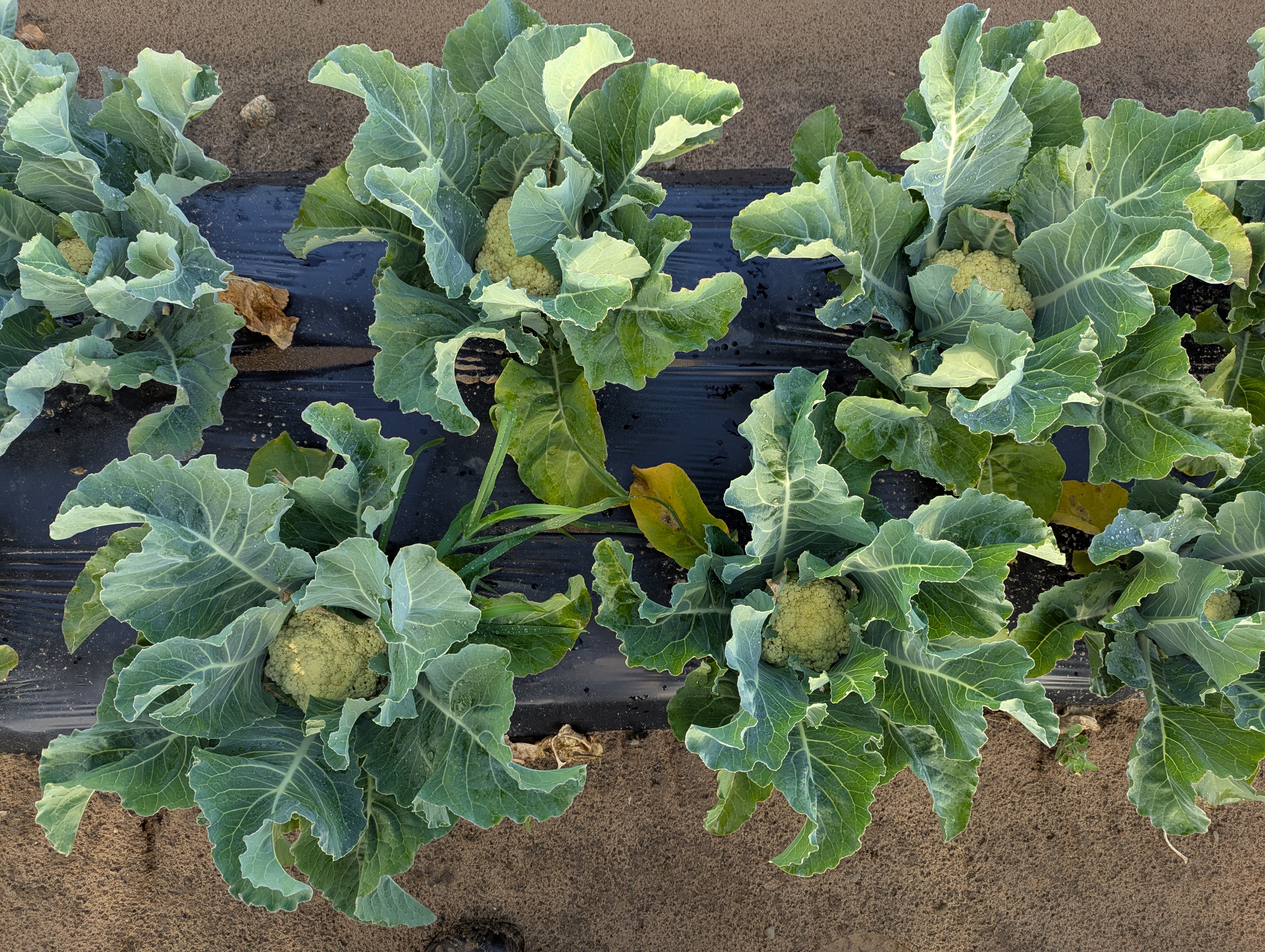
Cucurbits

Cucumbers and zucchini are being harvested now. Early pickles started last week by machine-harvesting. Some early melons are sizing up and starting to net. Cucumber beetles can be found on squash plants. Disease control season is here.
Cucumber downy mildew
With downy mildew documented in four of our southern Michigan counties, it is important to actively scout and preventively protect all cucumber plantings. MSU's spore trap network has picked up sporangia in all monitored counties across the state.
Phytophthora crown rot on cucurbits and peppers
Now is the time to start an aggressive program for Phytophthora crown rot on cucurbits and peppers if you’ve had issues in the past. This plant pathogen lives in the soil and survives Michigan winters. It does not move via air currents but spreads via splash of contaminated soil, surface water such as culverts, rivers, creeks and streams contaminated by run-off from infested fields, and/or the dumping of diseased culls onto production fields. Phytophthora is especially unique because it can develop a swimming spore when the soil becomes saturated. The swimming spores move across a field in a pattern consistent with draining water and kills plants in its path.
Squash, zucchini, pepper and pumpkin are especially susceptible. Plants that wilt and don’t recover can be a tell-tale symptom of this disease. Phytophthora leaf blight is less common but has already been reported this season on pepper. Many of the state’s production sites have a history of contamination by this pathogen.
The strategies that are needed to protect susceptible crops include applying fungicides to the plant’s root/crown zone via drip to prevent death. However, protecting the fruit requires foliar fungicide sprays. Current recommendations for summer squash and zucchini, as well as winter squash and pumpkin, can be found on the Hausbeck lab website.
There are some varieties of green bell peppers that have a good level of genetic resistance to Phytophthora. These cultivars are not immune from the disease, but they will stay healthy a lot longer than the varieties that do not have this resistance.
Powdery mildew
This foliar disease of pumpkins, squash and cucumbers is one of the easiest to identify because of the whitish, talcum-like, powdery growth that develops on leaf surfaces, petioles and stems. Infected leaves usually wither and die. Premature loss of foliage often reduces the size or number of fruit and the length of the harvest period. Market quality can also be reduced because of sunburning of the fruit and premature or incomplete ripening resulting in poor flavor or rind color (pumpkin).
Powdery mildew occurs during most years, although the time of the first symptoms is unpredictable. The conidia that are responsible for infection are transported by air currents. Powdery mildew develops first on close-set plants and on the shaded lower leaves. Once powdery mildew becomes established, the disease often increases rapidly. The powdery mildew fungus can multiply and spread quickly under favorable conditions because the length of time between infection and symptom appearance is usually only three to seven days. Also, many conidia that can infect healthy tissue can be produced in a relatively short time.
Resistant cultivars are commercially available and are helpful to limit powdery mildew. Biological and conventional fungicides are also available to manage this disease and can be combined with genetic resistance. Locally systemic fungicides can be especially helpful. If a protectant fungicide such as Bravo WeatherStik chlorothalonil is applied to manage powdery mildew and other diseases, it is important to get good coverage of lower leaf surfaces and foliage below the plant canopy. If good coverage is not obtained, the fungus can colonize the plant tissue that is left unsprayed unless a locally systemic fungicide is used. In some cases, growers think they are achieving good control of powdery mildew with protectant fungicides because they do not see the white spots on the topsides of the leaf. However, the leaves may become yellow and when they examine the leaf more closely, the undersides of the leaf and stem are covered with white powdery growth.
Monitor each field closely for the first powdery mildew colonies. Consider walking through a field once or twice a week to look for it, especially on the older, shaded leaves. Look at the underside of the leaves. If powdery mildew is first noted from a tractor or truck, then odds are the disease has progressed to the point that even a systemic fungicide will provide poor control. Early control of powdery mildew is the most effective. If limiting applications to only a few fungicide sprays over the course of the season, it is best to start these sprays at the first appearance of powdery mildew even if it means the foliage is left unprotected for a bit in the fall. Initiating fungicide applications after the disease is well-established and spraying into the fall when the foliage is less critical to the crop’s yield and quality.
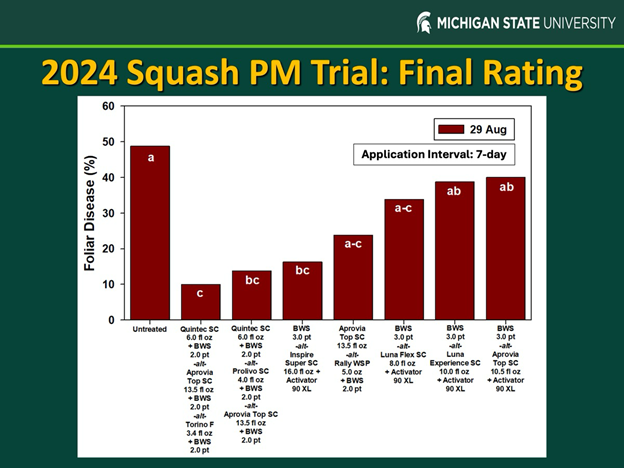
Fruiting vegetables
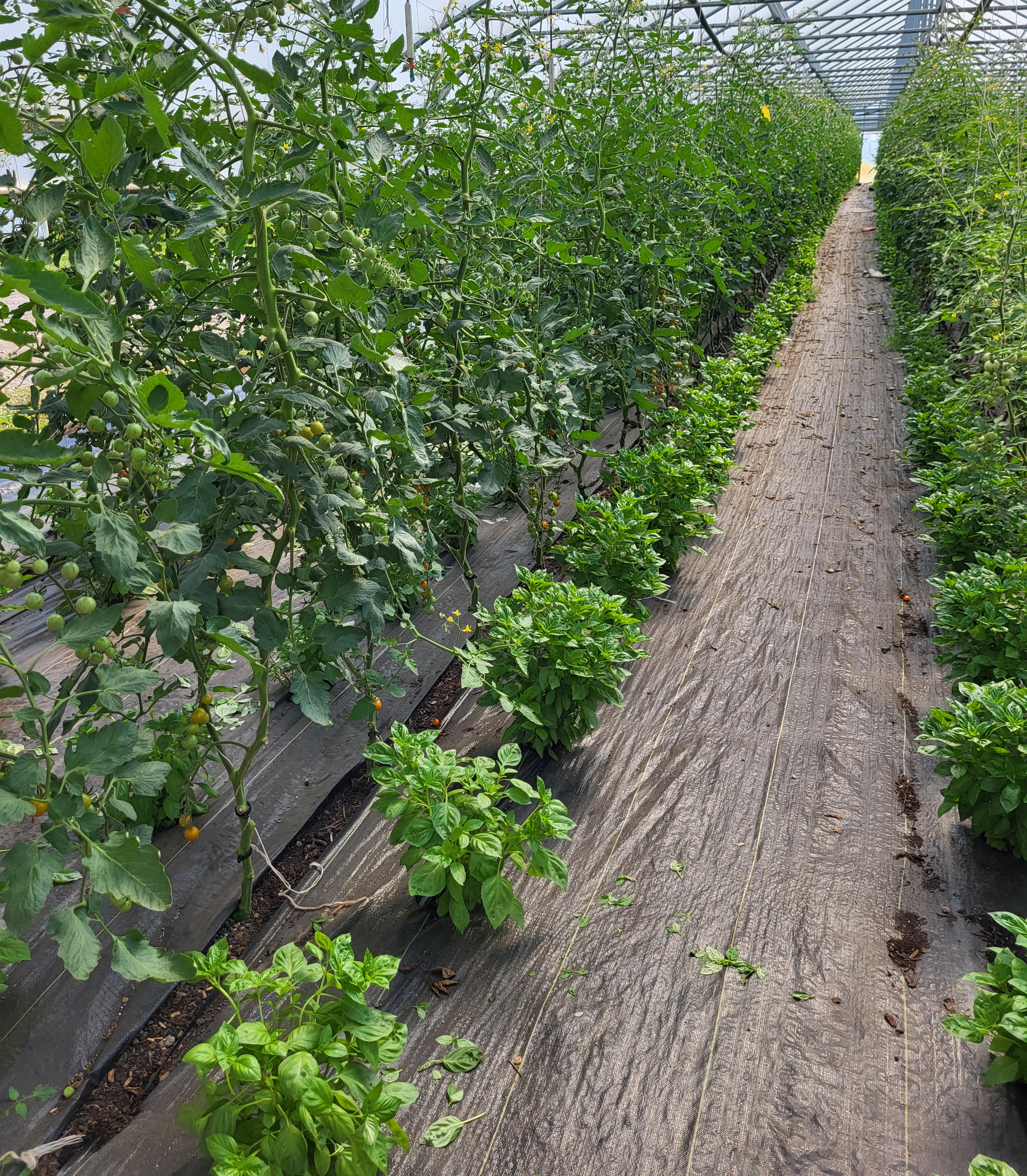
Eggplant harvest has begun on some farms, with green bell peppers close behind. Tomatoes are sizing up, and some farms are reporting curled leaves, which is a normal reaction to bright and sunny conditions. They don’t uncurl, but it doesn’t typically affect yield or quality. Plantings continue. Bacterial issues are easy to find. The driving rains from the past couple weeks knocked off pepper flowers and delayed fruit set.
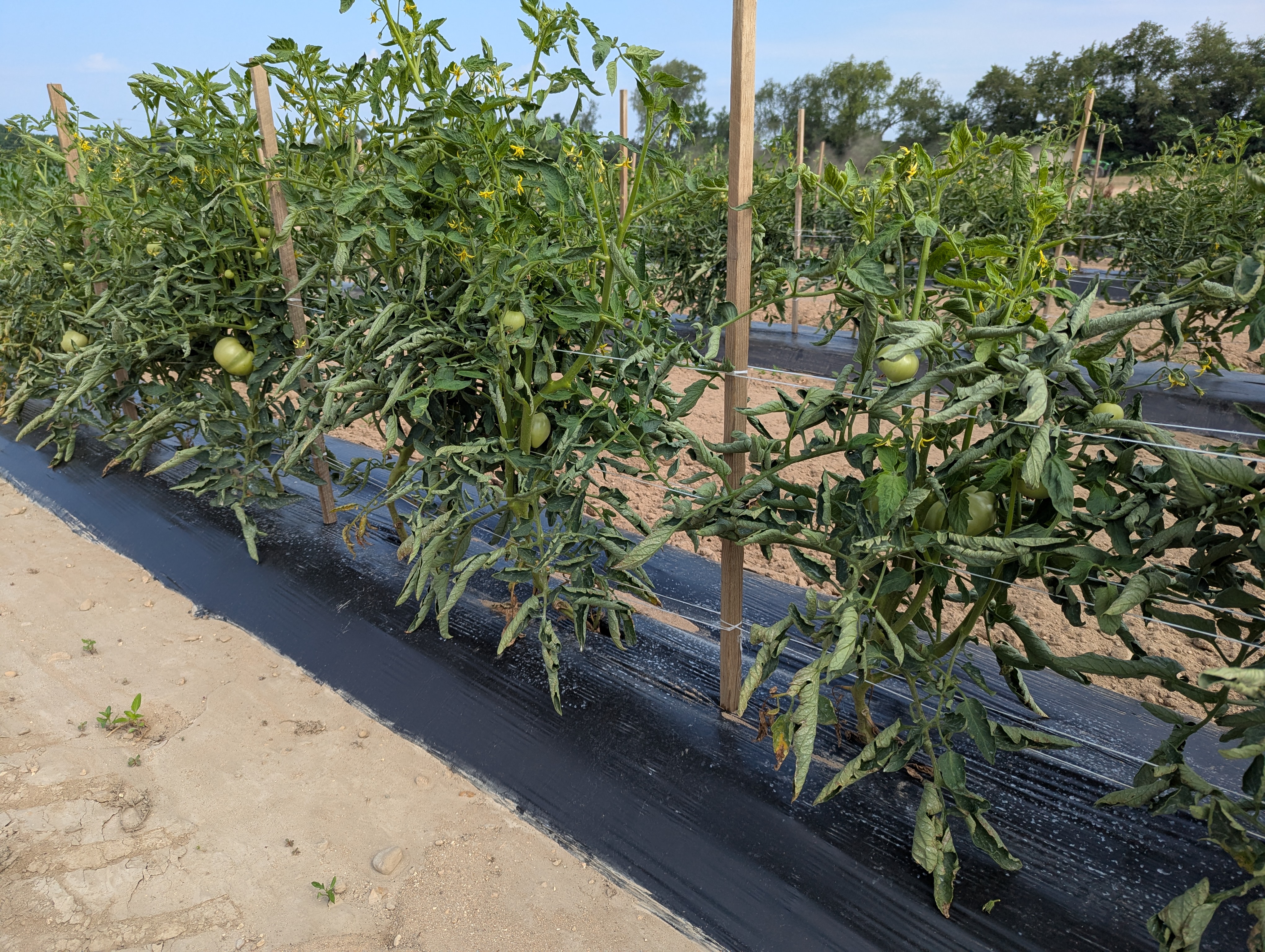
Asiatic garden beetle was uncovered munching on pepper plants and sunflowers at one farm this week. The beetles munched on foliage leaving behind a black cast. When we dug down, there were tons of Asiatic garden beetles hiding in the soil around each plant. They come out at night to do their dirty work. A new one on this Extension educator!
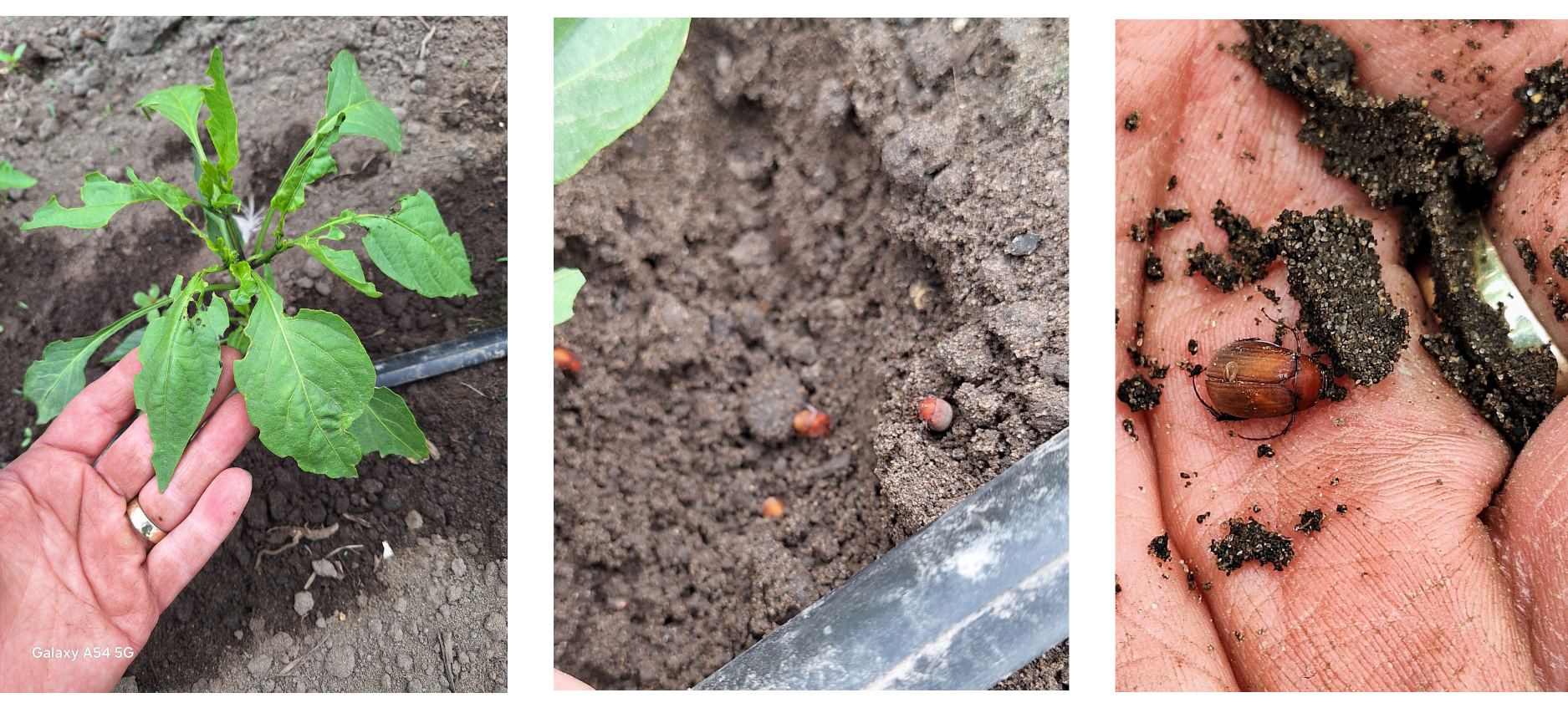
Japanese beetle and Colorado potato beetle damage are being observed on eggplant foliage.
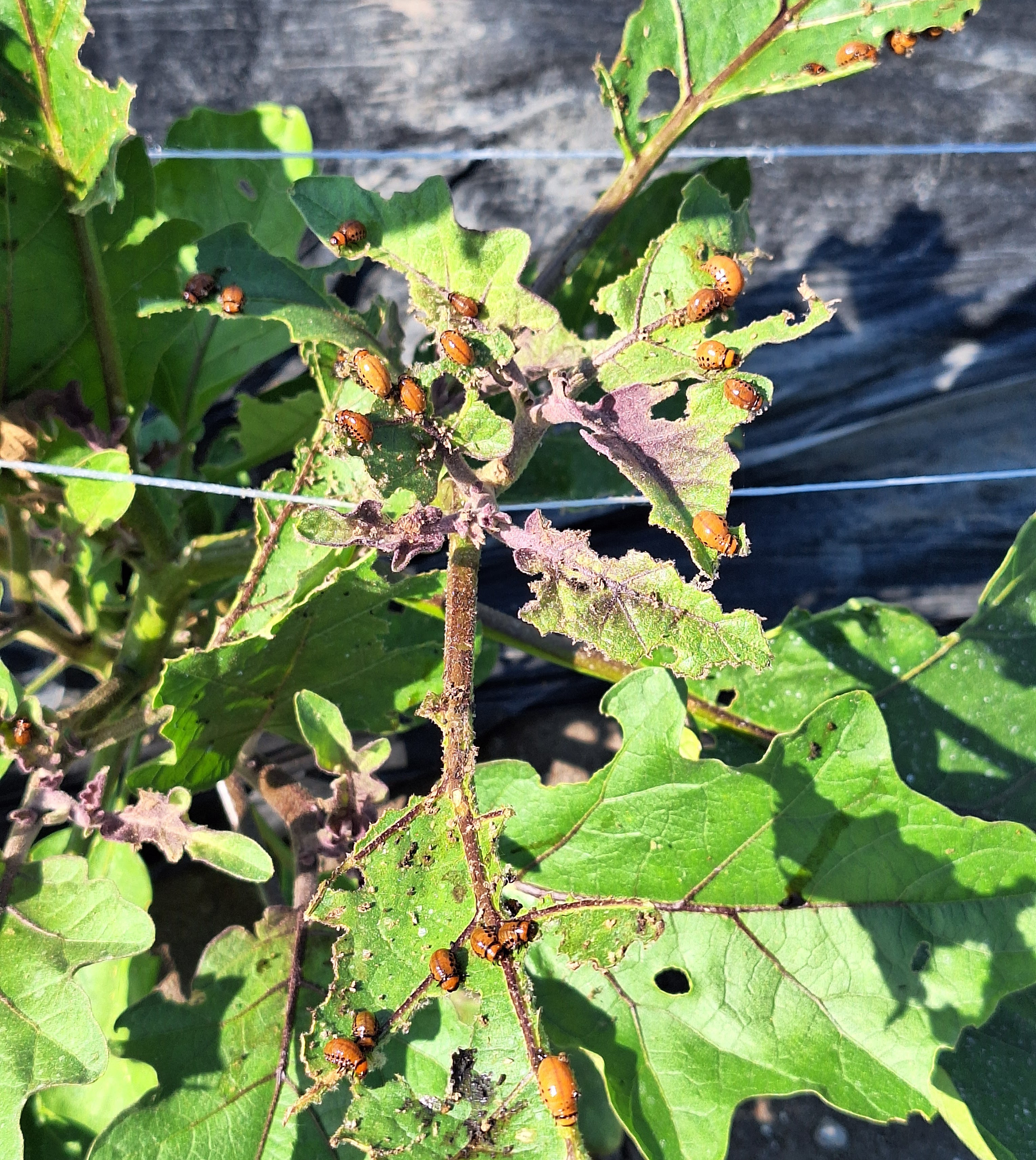
Onions and garlic
Thrips damage in onions nearing harvest size is being observed. Garlic and sweet onion harvest is at hand on many farms.
Onion thrips numbers had increased in some, but not all locations, this week. Some farms had applied a tank mix of Lannate, Agrimek and Warrior following Movento. This tank mix has proven effective in Cornell University trials. In New York, it is being tried in locations where other options are no longer effective, and where these individual tank mix partners are marginal on their own. If Agrimek and Lannate still work well solo on your farm, it may not make sense to tank mix these. However, if they are not effective individually, it could be worth trying and observing the results. Other post-Movento options could include Radiant (one day preharvest interval or PHI), Exirel (one-day PHI), Lannate (seven-day PHI) plus Warrior (14-day PHI), AgriMek (30-day PHI) and Minecto Pro (30-day PHI).
Potatoes
Colorado potato beetles are pupating in many areas of Michigan (see photo at the end of this section), indicating summer adults are or will be emerging soon. You can follow the MSU Enviroweather Colorado potato degree day model. If using insecticides, switch to a different class of active ingredients when summer adults emerge. To manage resistance, avoid using the same active ingredient within a generation. Table 1 lists insecticides recommended for summer generation beetles, especially if neonicotinoids were used earlier in the season.
Scouting for Colorado potato beetle is an important part of correctly timing foliar insecticide applications and thus preventing insecticide resistance becoming a major problem. Visually inspect multiple whole plants per field to count egg masses, small and large larvae, and adults. Then record these numbers to determine if an economic threshold has been reached. The typical action threshold is an average of one large larva per plant or one adult per plant.
Table 1. Insecticide options for summer Colorado potato beetle management. To manage resistance, if any of the listed active ingredients were already applied during the overwintered generation, do not apply again for the summer generation beetles.
|
Delivery |
Product |
Active Ingredient |
IRAC |
|---|---|---|---|
|
Foliar |
Radiant, Delegate |
spinetoram |
5 |
|
Foliar |
Blackhawk, Entrust |
spinosad |
5 |
|
Foliar |
Agri-Mek, generics |
abamectin |
6 |
|
Foliar |
Coragen, Vanatcor, Besiege, Voliam Xpress1 |
chlorantraniliprole |
28 |
|
Foliar |
Exirel |
cyantraniliprole |
28 |
|
Foliar |
Admire Pro, generics |
imidacloprid |
4A |
|
Foliar |
Actara, Endigo ZC1 |
thiamethoxam |
4A |
|
Foliar |
Avaunt2 |
indoxacarb |
22A |
|
Foliar |
Torac |
tolfenpyrad |
21A |
1 Voliam Xpress premixed with pyrethroid, apply when potato leafhoppers/tarnished plant bugs are also problematic.
2 Avaunt has limited activity on larvae.
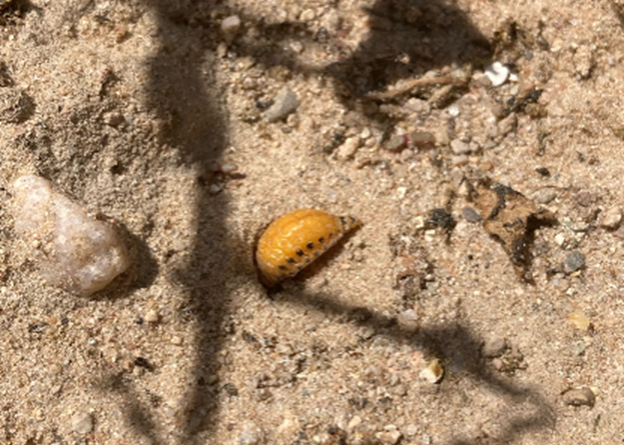
Sweet corn
Harvest began on farms using season extension tools in the spring, such as plastic mulch, row covers and transplants. There is caterpillar damage in the tips of mature sweet corn ears. Bird damage is also being reported.
Corn earworm has been active in some parts of the state. Scouts observed captures of 30-50 moths per night last week in some west central Michigan locations as soon as traps were put out, including at one location MSU Extension is monitoring. These higher out of the gate numbers are likely due to the frequent south to north airflow we saw earlier this year. While numbers may be locally high, they can vary from location to location and by trap type (see Table 2). Read more about trapping from MSU Extension.
Table 2. Corn earworm captures. Total in trap for week1 (avg # per night2).
|
Week |
Saginaw Co.3 |
Oceana Co.4 |
Ottawa Co.4 |
|---|---|---|---|
|
6/30 |
No data |
42 (7.0) |
265 (33.1) |
|
7/7 |
3 (0.4) |
122 (17.4) |
30 (6.0) |
1Total number collected since last trap check; 2The total number divided by the number of nights since the last trap check; 3Cloth Heliothis traps track trends but catch less moths overall; 4Wire Harstack traps capture more moths.
To our south in the Indiana network maintained by Purdue University, corn earworm captures have been variable, some low, some high, with mostly low captures in Ohio State University’s network. Insect Forecast predicts a low risk of additional migration this Friday, July 11.
European corn borer had been active at two west central farms. At one location, we first noticed some feeding on tassels and then on whorl leaves wrapping them. On closer inspection, some caterpillars were still feeding in the half-emerged tassels. Once tassels emerge, caterpillars may move down the plant to bore into stalks and ears. A single application of a pyrethroid insecticide at tassel can help control these caterpillars. Once earworm sprays kick in, further effort is not needed. At the second farm, the damage was on older leaves and no caterpillars were found in tassels.
One last note: European corn borers can bore into the shank and side of ears, and do not confine feeding to the tip like corn earworm. That is one way to tell what worm is bothering your corn.
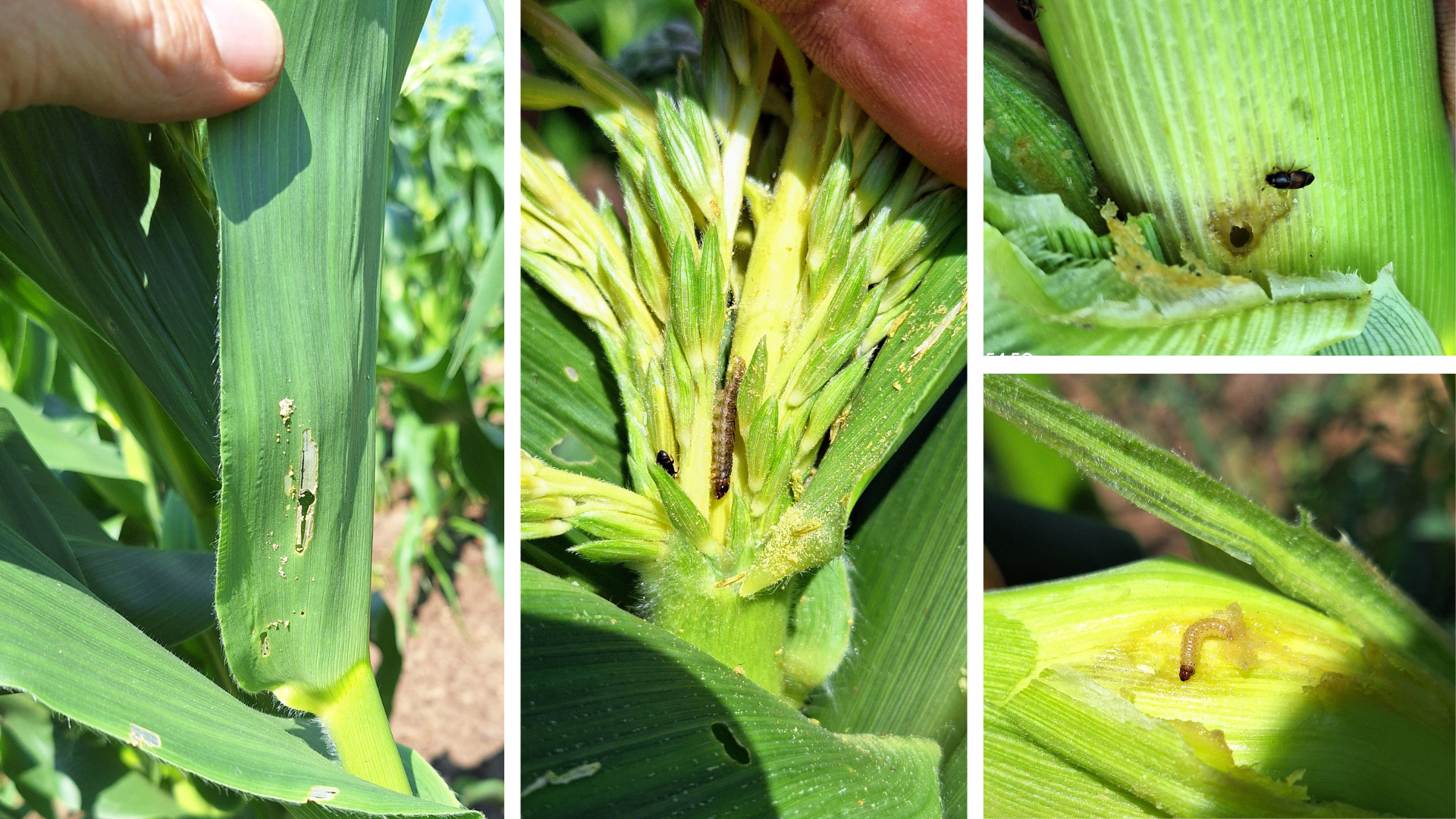
Produce Food Safety On-Farm Readiness Reviews
Schedule an On-Farm Readiness Review today for a two-hour educational visit that takes place during the harvest season and is meant to be casual and low stress. Everything discussed during an On-Farm Readiness Review is confidential and focuses on ways to reduce risks in relation to produce safety. There is no pressure to take our advice either, we are just here to support you in your produce safety efforts.
On-farm soil moisture monitoring research opportunity
MSU researchers are looking for 20 farms to install soil moisture probes in up to two fields. Cooperators get access to real-time data for both monitoring stations for three growing seasons (fall 2025-fall 2028). Refer to the flier for more details.
Reach out to Alex Kuhl (kuhlalex@msu.edu) if you might be interested or have questions.
Events
- July 17, 7-8 a.m., Field Crops Virtual Breakfast Series: White Mold-Tar Spot Spraying (RUP/CCA)
- July 22, 9 a.m.-4 p.m., Beginning Farmer Field day, West Central Michigan Research and Extension Center, 5185 N. Oceana Dr. Hart, MI 49420
- July 24, 7-8 a.m., Field Crops Virtual Breakfast series: Cover Crops After Wheat (RUP/CCA)
- July 29, 9 a.m.-3 p.m., Vegetables, Livestock, Markets and More! Field Day at Providence Farm (Central Lake)
- July 30, Edible Flint Food Garden Tour
- August 1, 9 a.m.-2:30 p.m., Summer Irrigation Workshop
- August 5, 12-1 p.m., Seed Treatment Webinar Series
- August 7, 10 a.m.-2 p.m., Weed Management Field Day at Full Hollow Farm
- August 12, 12-1 p.m., Seed Treatment Webinar Series
- August 18 – 19, Northern Michigan Small Farm Conference
- August 19, 12-1 p.m., Seed Treatment Webinar Series
- August 20, 10 a.m.-2 p.m., Organic Vegetable Pest Management Field Day
- August 26, 12-1 p.m., Seed Treatment Webinar Series
- October 11, 1-3 p.m., Farm Field Day with Fisheye Farm
- October 21, 12-1 p.m., What are Your Farm Certification Goals? - TOPP Online Webinar
- October 28, 12-1 p.m., Organic Market Premium - How Much Can I Expect to Get for My Products? - TOPP Online Webinar
- November 4, 12-1 p.m., How to Make Money in Organic Farming - TOPP Online Webinar
- December 9-11, Great Lakes Expo
This work is supported by the Crop Protection and Pest Management Program [grant no 2024-70006-43569] from the USDA National Institute of Food and Agriculture. Any opinions, findings, conclusions, or recommendations expressed in this publication are those of the author(s) and do not necessarily reflect the view of the U.S. Department of Agriculture.



 Print
Print Email
Email

